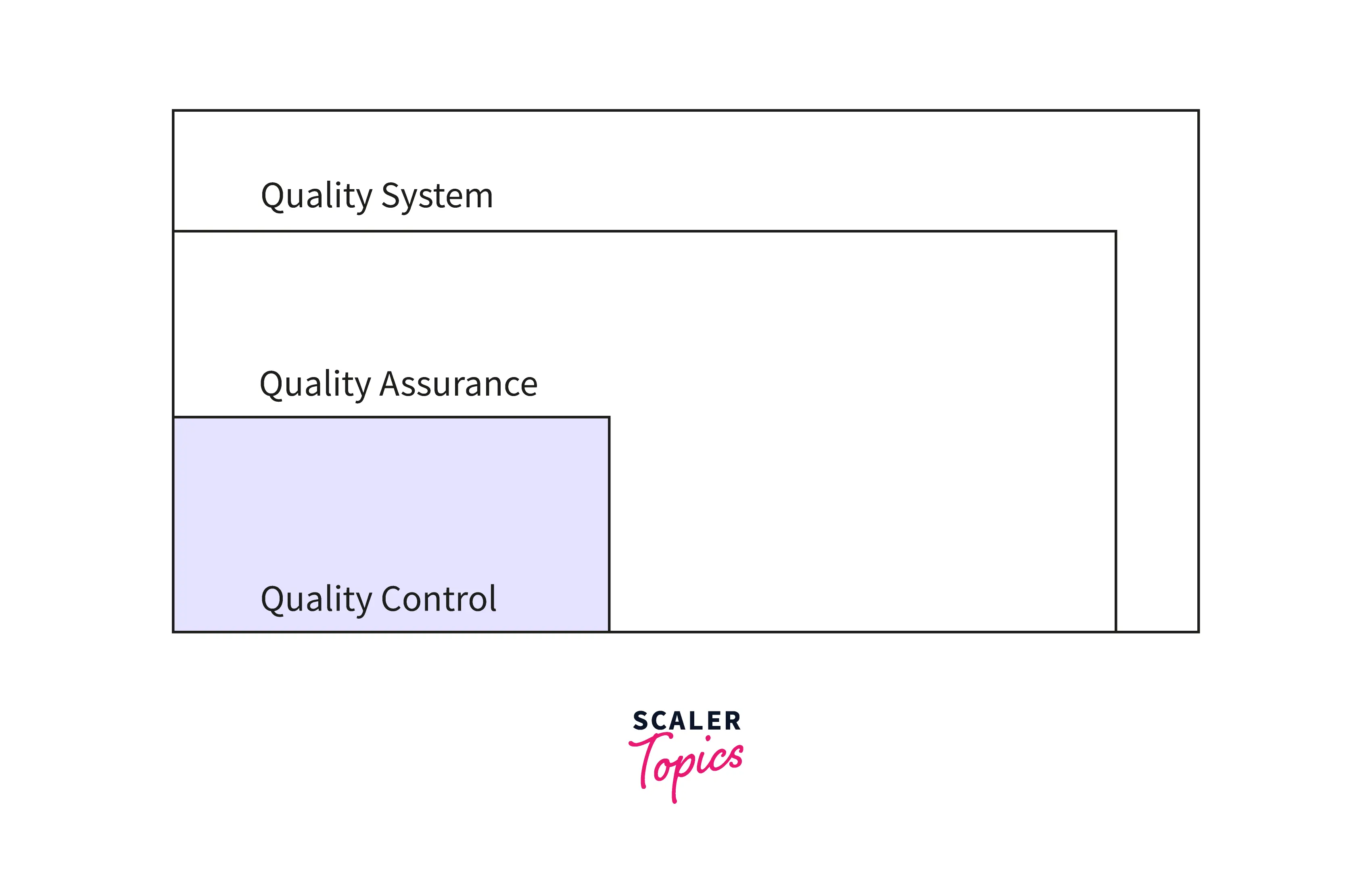Difference Between Quality Assurance and Quality Control
Challenge Inside! : Find out where you stand! Try quiz, solve problems & win rewards!
Go to Challenge
Learn via video courses
Overview
Quality assurance and quality control are used interchangeably, but both signify different aspects.
Quality control is a part of quality assurance; if an assurance has been provided, that means the product has been very well tested. Quality assurance is a much wider term, and testing is just one aspect of quality control.
What is Quality Control in Software Testing?
Quality Control is a process to ensure an efficient product reaches the market. The product goes through multiple rounds of testing. The entire process is made efficient. Quality control improves the product quality, verifies the product's functional and non-functional requirements, and validates if the product is the right fit for the market.
Advantages of Quality Control
- Quality control in software testing helps improve software quality by identifying and addressing defects, bugs, and inconsistencies.
- Through quality control, software development teams can enhance the user experience by ensuring that the software meets or exceeds user expectations.
- Implementing quality control measures in software testing can lead to cost savings by detecting and resolving defects early in the development process, reducing the need for expensive bug fixes and rework.
- Regulatory compliance is ensured through quality control as it helps the software meet industry regulations and standards, avoiding legal and financial risks.
Disadvantages of Quality Control
- Implementing quality control measures can increase the overall time required for software development and testing.
- Quality control can involve additional expenses such as investing in testing tools, resources, etc.
- Quality control measures may not be able to identify all possible defects and issues, especially in real-world scenarios or specific edge cases.
- Focusing too much on quality control and extensive testing may divert resources from other important aspects of software development.
What is Quality Assurance in Software Testing?
- Quality Assurance ensures the organization uses the best practices in the entire development cycle to produce a quality product for the market. Assurance is a guarantee only given after the organization has been validated by a third party and received certifications like ISO 9000, CMMI, and TMM.
- There are many quality assurance tools in the market, like monitoring tools, logs, performance monitoring, and code reviews by professionals.
- Quality Assurance is done at all phases: planning, development, and maintenance.
Advantages of Quality Assurance
- Quality assurance processes ensure that products or services meet specified quality standards, resulting in improved overall quality and reliability.
- Quality assurance helps in delivering products or services that consistently meet customer expectations, leading to higher customer satisfaction and loyalty.
- By implementing quality assurance practices, organizations can streamline and optimize their processes, reducing waste, rework, and inefficiencies.
- Quality assurance helps identify and mitigate potential risks and issues early in the development or production process, reducing the likelihood of costly failures or defects.
- Quality assurance ensures compliance with industry regulations and standards, enhancing the organization's reputation.
Disadvantages of Quality Assurance
- Implementing quality assurance processes can add additional time and resources to the development or production timeline which may result in delays.
- Quality assurance measures can increase the overall costs associated with testing, documentation, and quality control activities.
- Excessive focus on quality assurance may divert resources and attention away from other critical aspects of the project, such as innovation or timely delivery.
- The rigid implementation of quality assurance standards may hinder flexibility and adaptability, limiting the ability to respond quickly to changing customer needs or market demands.
Difference between Quality Assurance and Quality Control

| Quality Control | Quality Assurance |
|---|---|
| Quality control improves the quality of the product | Quality Assurance is a guarantee that the organization is following the best practices at every phase of product development |
| Quality control includes software testing. | Quality assurance includes quality control |
| Product undergoing quality control goes through functional and non-functional testing | Quality assurance includes certifications like ISO 900, CMMI, and TMM |
| Quality control talks about high-quality products | Quality assurance is associated with organizations' reputation and the entire SDLC process. |
| Quality control is more about internal testing | Quality Assurance is validation via the third party |
| Quality control aims at defect-free product | Quality Assurance aims at the defect-free process of product development |
| The testing team in the company does Quality control | Quality assurance is done by the entire team tech and non-tech involved in the product delivery |
Conclusion
- Quality control is associated with product testing and verifying the product is defect-free.
- Quality assurance is done at every phase of the development cycle. Assurance is a guarantee that the organization provides to the customers.
- Quality control is a part of quality assurance.
- Quality control is involved in the software testing life cycle phase, whereas quality assurance is part of the entire development cycle.
- There are many quality assurance tools like version control, monitoring, performance, etc.
- There are quality assurance certifications, such as ISO 9000, TMM, and CMMI, which are provided when they are audited for their quality management by third parties.
